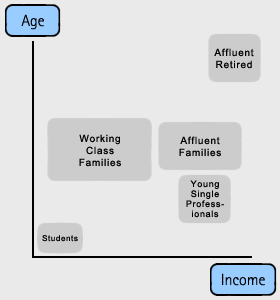| For most of the 20th century, marketing operated
under the assumption that there was a mass market for products
and services. Underpinning this assumption was the belief that
most consumers were very similar and consequently could be catered
with the same goods and services.
While this was an attractive strategy because it created a large
potential market and higher profit margins, notions of consumer
homogeneity (‘sameness’) have been overridden by a
more a precise understanding of distinct consumer segments. This
change of mentality in approach is noted by practitioners like
Spencer Brace, Sales and Marketing Manager at Bournemouth International
Airport:
 |
| Spencer
Brace, Sales & Marketing Manager,
Bournemouth International Airport. |
|
 |
It is generally accepted that the growth in competition and choice
means that there are ¿no markets for products that people like
a little, only for products that somebody likes a lotî (Linneman
and Stanton, 1991).
Market segmentation has been defined as the division of markets
into specific groups that are sufficiently homogenous but at the
same time different from other groups. For example the market
for holidays could be described as follows:
Holiday market segments by age and income
| Figure 7.1. Holiday
market segments by age and income |
|
 |
|
|
| |
|
The benefits of market segmentation are manifold. Segmentation
allows marketers to:
- quickly detect trends in a rapidly changing environment;
- design products and brands that truly meet the demands of
the target market;
- determine the most effective communication appeal;
- select media and distribution channels that will be most accessible
to the segment identified;
- face fewer competitors by selecting a niche that has been
overlooked by others
|

